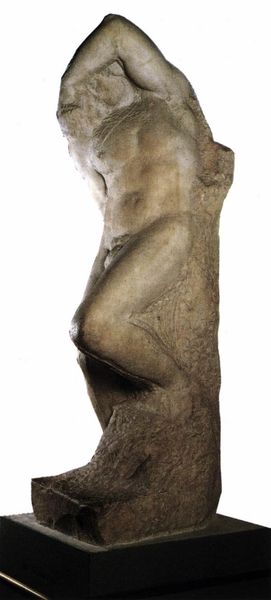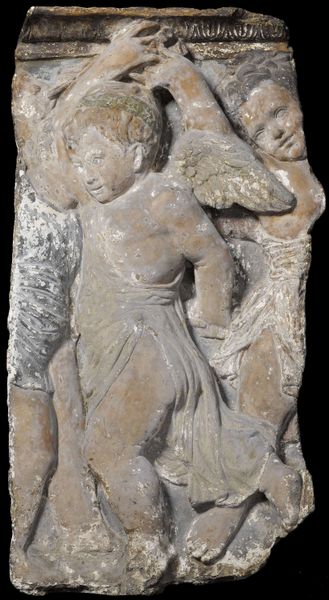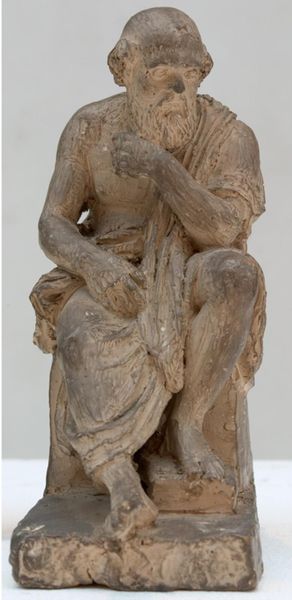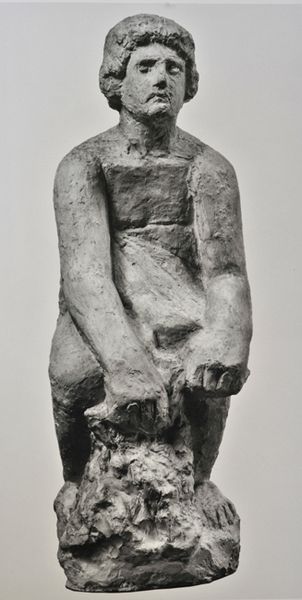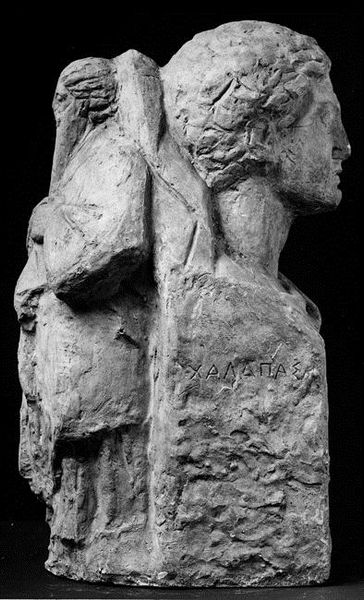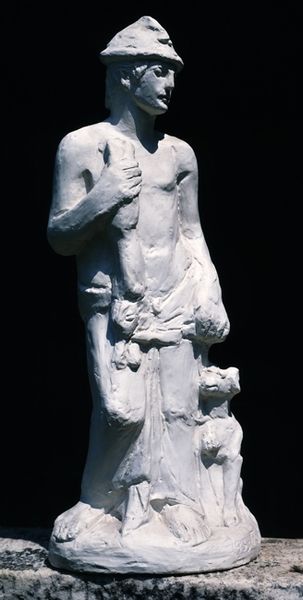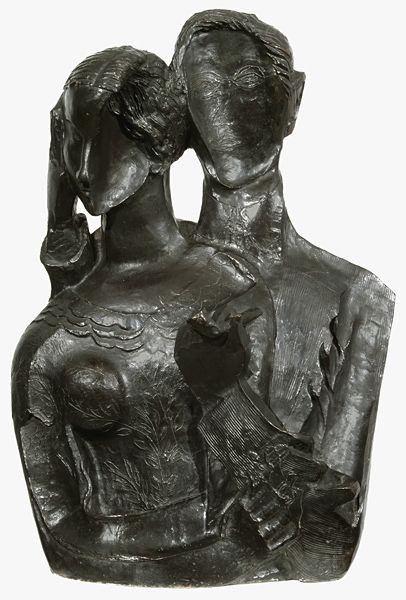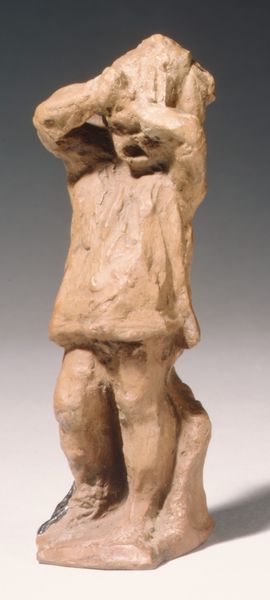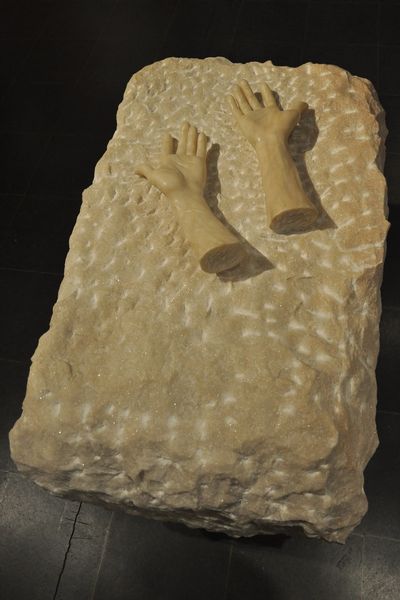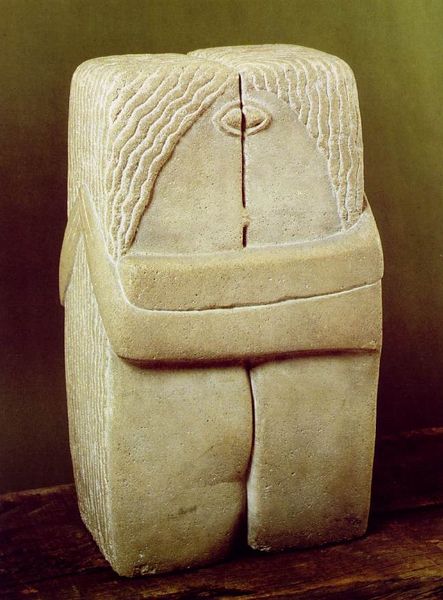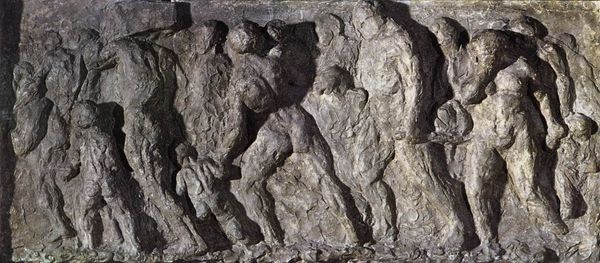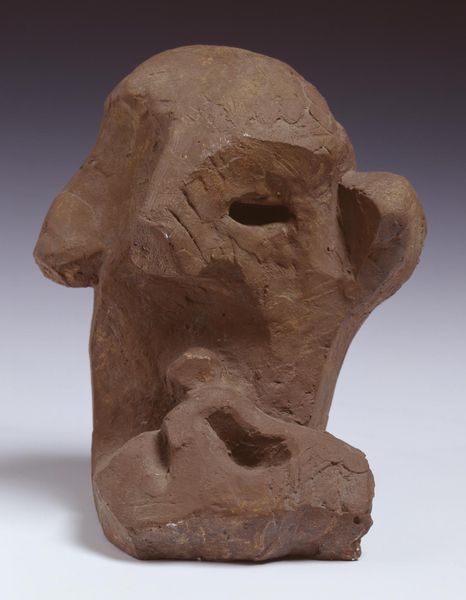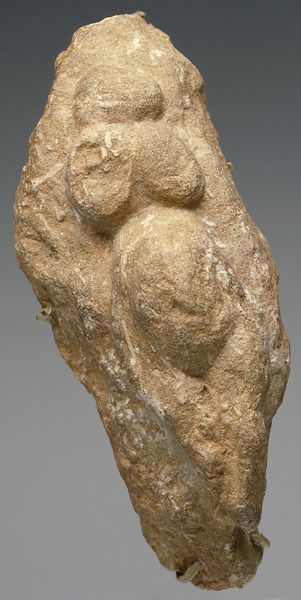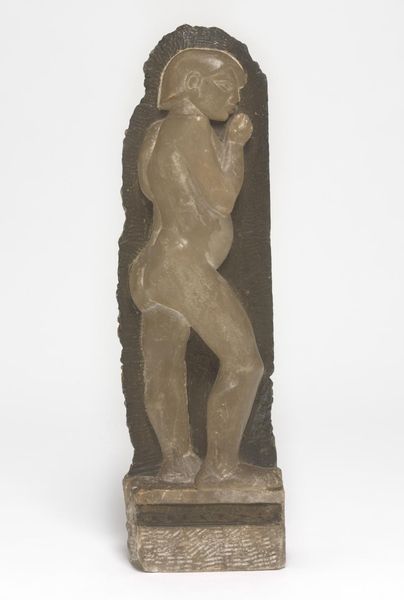
carving, sculpture, marble
#
carving
#
sculpture
#
figuration
#
11_renaissance
#
sculpture
#
history-painting
#
marble
#
italian-renaissance
#
nude
#
male-nude
Copyright: Public domain
Curator: This unfinished marble sculpture, “The Awakening Slave,” was crafted by Michelangelo around 1530. The figure now resides at the Galleria dell’Accademia in Florence. Editor: The immediate impression is one of struggle and emergence. The rough marble constrains the figure, giving it a raw, primal energy. He seems to be fighting his way out of the stone itself. Curator: Michelangelo originally conceived a series of such figures for the tomb of Pope Julius II. The tomb project suffered numerous setbacks, largely influenced by the changing dynamics between Michelangelo and the papal court. These "slaves," were intended as symbols of the subjugated arts upon the Pope's death. Editor: Subjugated is a powerful word, perfectly describing the trapped figures, as well as conveying the artistic repression of the era. Michelangelo seems obsessed with the contrast between raw, untamed nature and the human form striving for freedom and grace. What did the iconography suggest in using “slaves” and bondage at the time? Curator: During the Renaissance, the imagery of slavery had multifaceted meanings. Although physical slavery was a contemporary reality, here, Michelangelo is alluding to spiritual and intellectual bondage. The "slaves" likely represented the liberal arts held captive after Julius II's death, which were to serve as his triumphant legacy. Editor: The unpolished areas become so evocative! Look how only parts of the man's torso are freed from the stone; certain shapes appear from the chaos. He's emerging, being born before our eyes. There's definitely something potent here about how mankind yearns for freedom, isn't there? Curator: The art-historical narrative and interpretations behind this piece showcase the intricate relationships of the Church’s influence at the time. And the symbolism— the unfulfilled artistic visions and power—continues to inspire new readings. Editor: Exactly. The power of the symbol, unbound from a direct cultural context, transcends.
Comments
No comments
Be the first to comment and join the conversation on the ultimate creative platform.
